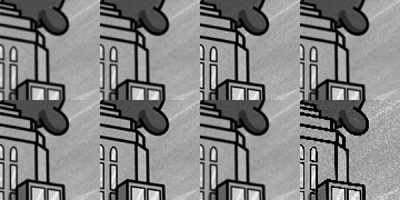lol ![]()
I’m already working on another plugin for something like that, and I can tell you that’s it’s not “simple” from a developer point of view.
And I’m even not sure that it could be useful for other (even if I try to do something that can be used by others)
Here, post-resizing processing of arbitrary number of actions is something I can’t implement quickly and easily…
Most of my plugins are built to let me be able to do things quickly, easily and in the way I’m thinking ![]()
It’s maybe a little bit selfish but consider:
- To implement something I need at least a “business requirement description”
And here, I’m the one who write it, based on my own experience and need only
- I provide plugins for everyone for free
- I’m open to improve them to let the functionalities being useful for others
That’s why I asked about workflows because I don’t want to spent time on something I won’t use -or something that won’t be used by others- if I don’t understand what is really needed and why.
I now better understand your need of resizing during export.
I’m looking about how implement this ![]()
@hulmanen clearly the filtering won’t be implemented here, too much work; I suppose the unsharpen is because by resizing and image with bicubic or bilinear filter generate soft/blurry edges… I suppose by using another resizing method, you can get some results that will match your need.
Here an example of this artwork resized from 4961x7016 to 800x1131, using the following resizing filter:
| Col 1 | Col 2 | Col 3 | Col 4 | |
|---|---|---|---|---|
| Row 1 | B-Spline | Bell | Bicubic | Bilinear |
| Row 2 | Hermite | Lancsoz3 | Mitchell | Nearest neighbour |
Result (scale 1:1)

Result (scale 4:1)
You can see difference between algorithms and sharpness.
Does having this could cover your need?
To talk about the PNG file and the crop functionality without downsizing, it’s pretty simple in my case.
Most of my artworks are made in A4@600dpi; that’s too big to be published.
So I have to resize them and export them as Jpeg, trying to keep the maximum quality (for example on KA it’s ~3MB max)
My first action is to flatten artwork.
I save a copy of all my artworks in a PNG version with full size; this let me:
- Having a full lossless version of my artwork ready to be used
- Having a file that I can open quickly on third party software (or in Krita) if needed
(most of my Kra files are heavy, can have hundred of layers, and takes time to be opened)
From here, before resizing, I export some part of the artwork in full size, to let people being able to appreciate details that will be lost with published resized version.
You can see what I mean on my artstation gallery.
Grum999
